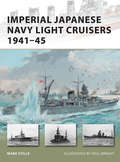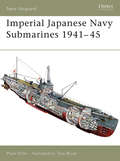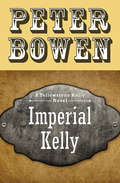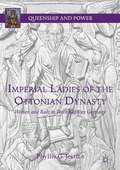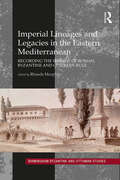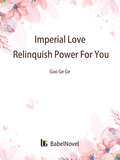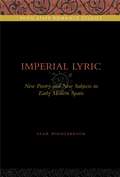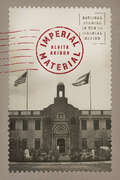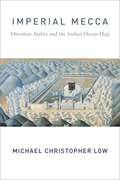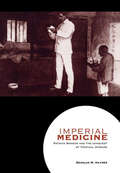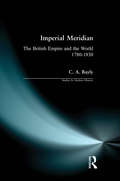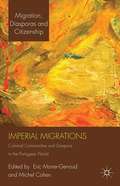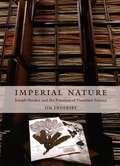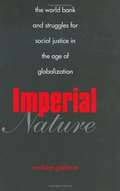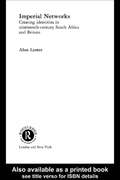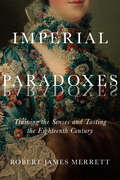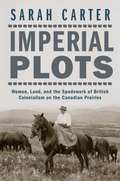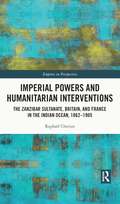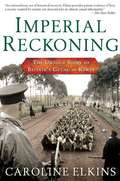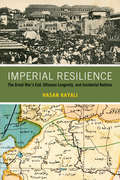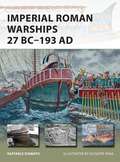- Table View
- List View
Imperial Japanese Navy Light Cruisers 1941-45
by Paul Wright Mark StilleLike their heavy cruiser brethren, the light cruisers built by the Imperial Japanese Navy in the build-up to WWII paid little more than lip service to the international naval treaties that were intended to keep the naval powers on a level playing field. The eight classes of light cruiser developed by the IJN were fast, well-armed, and technologically superior to the fleets the Allied powers could bring to bear. Serving with distinction across the Pacific Theatre, the IJN's light cruisers were committed to such actions as Midway and Leyte Gulf. Mark Stille continues Osprey's coverage of the IJN of WWII, with this concise and complete study of all 25 ships of the 8 light cruisers classes, from their design and development through to their ultimate fates. Detailed Osprey artwork and rare period photographs from the Fukui collection held in Kure, Japan, illustrate this discussion and provide great visual references for some of the most advanced naval vessels of WWII.
Imperial Japanese Navy Submarines 1941-45
by Tony Bryan Mark StilleThe Imperial Japanese Navy in World War II possessed the most technologically advanced and varied submarine fleet in the world. Ranging from the largest pre-nuclear submarines in the world to manned torpedoes, with the fastest combat vessels and midget submarines operating alongside craft capable of carrying floatplane bombers, the fleet should have been an awe-inspiring and highly effective force. Yet, despite playing a crucial scouting role and being equipped with the best torpedoes available, the Japanese submarine fleet was surprisingly ineffective.With unique color plates, Mark Stille highlights the technical details of this diverse fleet, including the design successes and operational errors as well as investigating the underlying causes behind the failures of one of the greatest naval forces in the Pacific.
Imperial Kelly: Yellowstone Kelly, Kelly Blue, Imperial Kelly, And Kelly And The Three-toed Horse (The Yellowstone Kelly Novels #3)
by Peter BowenYellowstone Kelly has dealt with Indians, Zulus, hapless Brits, and Mormons. Now the intrepid scout meets his greatest challenge: Theodore Roosevelt.Nowadays US Army Major Luther &“Yellowstone&” Kelly isn&’t the young lively man he once was. He&’s cantankerous, stubborn, and his nagging illnesses are exacerbated by the slightest provocation. Still, Kelly is called back into action by his most irritating boss yet: a young assistant secretary of the navy by the name of Theodore &“Teethadore&” Roosevelt. The future president needs a crew of toughs to join his Rough Riders outfit, and he correctly reckons that Kelly has an inside track on some of the nastiest ones. Kelly enlists a rascally crew, including his friends Butch Cassidy and the Sundance Kid, and helps Roosevelt win the Spanish-American War. Next an impressive piece of jade leads him over the Pacific, before he&’s summoned to observe the outbreak of the Boer War. While sailing to southern Africa, he runs into Winston Churchill in Mozambique . . . and on Kelly stumbles into other areas of the history books. Whether he&’s being chased by Boers or Igorote tribesmen, Kelly always maintains his trademark cynicism and resourcefulness, somehow finding a way to always land on his feet—even if Teethadore is determined to take credit for it.
Imperial Ladies of the Ottonian Dynasty: Women And Rule In Tenth-century Germany (Queenship and Power)
by Phyllis G. JesticeIn tenth-century Europe and particularly in Germany, imperial women were able to wield power in ways that were scarcely imaginable in earlier centuries. Theophanu and Adelheid were two of the most influential figures in the Ottonian reich along with their husbands, who relied heavily on their support. Phyllis G. Jestice examines an array of factors that produced their power and prestige, including societal attitudes toward women, their wealth, their unction as queens, and their carefully constructed image of piety. Due to their influential positions, Theophanu and Adelheid reclaimed control of the young Otto III despite fierce opposition from Henry the Quarrelsome during the throne struggle of 984. In examining how they successfully secured the regency, this book confronts the outmoded notion of exceptionalism and illuminates the lives of powerful Ottonian women.
Imperial Lineages and Legacies in the Eastern Mediterranean: Recording the Imprint of Roman, Byzantine and Ottoman Rule (Birmingham Byzantine and Ottoman Studies #18)
by Rhoads MurpheyThe comparative study of empires has traditionally been addressed in the widest possible global historical perspective with comparison of New World empires such as the Aztecs and Incas side by side with the history of imperial Rome and the empires of China and Russia in the medieval and modern periods. Surprisingly little work has been carried out focusing on the evolution of state control and imperial administration in the same territory; approached in a rigorous and historically grounded fashion over a wide extent of historical time from late antiquity to the twentieth century. The empires of Rome, Byzantium, the Ottomans and the latter-day imperialists in the nineteenth and early twentieth centuries, all inherited or seized and sought to develop overlapping parts of a common territorial base in the Eastern Mediterranean and all struggled to contain, control or otherwise alter the political, cultural and spiritual allegiances of the same indigenous population groups that were brought under their rule and administration. The task undertaken in Imperial Lineages and Legacies in the Eastern Mediterranean is to investigate the balance between continuity and change adopted at various historical conjunctures when new imperial regimes were established and to expose common features and shared approaches to the challenge of imperial rule that united otherwise divergent societies and imperial administrations. The work incorporates the contributions by twelve scholars, each leading practitioners in their respective fields and each contributing their particular insights on the shared theme of imperial identity and legacy in the Mediterranean World of the pagan, Christian and Muslim eras.
Imperial Love: Volume 1 (Volume 1 #1)
by ZhenyinfangHe is the eldest son of the Li family. He is the most popular man under the emperor's feet. He is the Prime Minister of the royal government. She is the orphan of the decaying Chen family. Originally her mother was a concubine, but her family was ruined.Li Wenjun, the high spirited prime minister, took the army to the west to wipe out the thieves, but was persecuted by the minister, which led to the death of 30000 troops. Without any evidence, he planned to die and thank huangen. He jumped down from the cliff and was saved by her. At last, he let Li Wenjun abandon the prime minister and spend his whole life with her.
Imperial Lyric: New Poetry and New Subjects in Early Modern Spain (Penn State Romance Studies #7)
by Leah MiddlebrookPresent scholarly conversations about early European and global modernity have yet to acknowledge fully the significance of Spain and Spanish cultural production. Poetry and ideology in early modern Spain form the backdrop for Imperial Lyric, which seeks to address this shortcoming. Based on readings of representative poems by eight Peninsular writers, Imperial Lyric demonstrates that the lyric was a crucial site for the negotiation of masculine identity as Spain’s noblemen were alternately cajoled and coerced into abandoning their identifications with images of the medieval hero and assuming instead the posture of subjects. The book thus demonstrates the importance of Peninsular letters to our understanding of shifting ideologies of the self, language, and the state that mark watersheds for European and American modernity. At the same time, this book aims to complicate the historicizing turn we have taken in the field of early modern studies by considering a threshold of modernity that was specific to poetry, one that was inscribed in Spanish culture when the genre of lyric poetry attained a certain kind of prestige at the expense of epic. Imperial Lyric breaks striking new ground in the field of early modern studies.
Imperial Material: National Symbols in the US Colonial Empire
by Alvita AkibohAn ambitious history of flags, stamps, and currency—and the role they played in US imperialism. In Imperial Material, Alvita Akiboh reveals how US national identity has been created, challenged, and transformed through embodiments of empire found in US territories, from the US dollar bill to the fifty-star flag. These symbolic objects encode the relationships between territories—including the Philippines, the Hawaiian Islands, Puerto Rico, and Guam—and the empire with which they have been entangled. Akiboh shows how such items became objects of local power, their original intent transmogrified. For even if imperial territories were not always front and center for federal lawmakers and administrators, their inhabitants remained continuously aware of the imperial United States, whose presence announced itself on every bit of currency, every stamp, and the local flag.
Imperial Mecca: Ottoman Arabia and the Indian Ocean Hajj (Columbia Studies in International and Global History)
by Michael Christopher LowWith the advent of the steamship, repeated outbreaks of cholera marked oceanic pilgrimages to Mecca as a dangerous form of travel and a vehicle for the globalization of epidemic diseases. European, especially British Indian, officials also feared that lengthy sojourns in Arabia might expose their Muslim subjects to radicalizing influences from anticolonial dissidents and pan-Islamic activists. European colonial empires’ newfound ability to set the terms of hajj travel not only affected the lives of millions of pilgrims but also dramatically challenged the Ottoman Empire, the world’s only remaining Muslim imperial power.Michael Christopher Low analyzes the late Ottoman hajj and Hijaz region as transimperial spaces, reshaped by the competing forces of Istanbul’s project of frontier modernization and the extraterritorial reach of British India’s steamship empire in the Indian Ocean and Red Sea. Imperial Mecca recasts Ottoman Arabia as a distant, unstable semiautonomous frontier that Istanbul struggled to modernize and defend against the onslaught of colonial steamship mobility. As it turned out, steamships carried not just pilgrims, passports, and microbes, but the specter of legal imperialism and colonial intervention. Over the course of roughly a half century from the 1850s through World War I, British India’s fear of the hajj as a vector of anticolonial subversion gradually gave way to an increasingly sophisticated administrative, legal, and medical protectorate over the steamship hajj, threatening to eclipse the Ottoman state and Caliphate’s prized legitimizing claim as protector of Islam’s most holy places. Drawing on a wide range of Ottoman and British archival sources, this book sheds new light on the transimperial and global histories traversed along the pilgrimage to Mecca.
Imperial Medicine
by Douglas M. HaynesIn 1866 Patrick Manson, a young Scottish doctor fresh from medical school, left London to launch his career in China as a port surgeon for the Imperial Chinese Customs Service. For the next two decades, he served in this outpost of British power in the Far East, and extended the frontiers of British medicine. In 1899, at the twilight of his career and as the British Empire approached its zenith, he founded the London School of Tropical Medicine. For these contributions Manson would later be called the "father of British tropical medicine."In Imperial Medicine: Patrick Manson and the Conquest of Tropical Disease Douglas M. Haynes uses Manson's career to explore the role of British imperialism in the making of Victorian medicine and science. He challenges the categories of "home" and "empire" that have long informed accounts of British medicine and science, revealing a vastly more dynamic, dialectical relationship between the imperial metropole and periphery than has previously been recognized. Manson's decision to launch his career in China was no accident; the empire provided a critical source of career opportunities for a chronically overcrowded profession in Britain. And Manson used the London media's interest in the empire to advance his scientific agenda, including the discovery of the transmission of malaria in 1898, which he portrayed as British science.The empire not only created a demand for practitioners but also enhanced the presence of British medicine throughout the world. Haynes documents how the empire subsidized research science at the London School of Tropical Medicine and elsewhere in Britain in the early twentieth century. By illuminating the historical enmeshment of Victorian medicine and science in Britain's imperial project, Imperial Medicine identifies the present-day privileged distribution of specialist knowledge about disease with the lingering consequences of European imperialism.
Imperial Meridian: The British Empire and the World 1780-1830 (Studies In Modern History)
by C. A. BaylyIn this impressive and ambitious survey Dr Bayly studies the rise, apogee and decline of what has come to be called `the Second British Empire' -- the great expansion of British dominion overseas (particularly in Asia and the Middle East) during the French Revolutionary and Napoleonic era that, coming between the loss of America and the subsequent partition of Africa, constitutes the central phase of British imperial history.
Imperial Migrations
by Eric Morier-Genoud Michel CahenThis volume investigates what role colonial communities and diaspora have had in shaping the Portuguese empire and its heritage, exploring topics such as Portuguese migration to Africa, the Ismaili and the Swiss presence in Mozambique, the Goanese in East Africa, the Chinese in Brazil, and the history of the African presence in Portugal.
Imperial Nature: Joseph Hooker and the Practices of Victorian Science
by Jim EndersbyJoseph Dalton Hooker (1817–1911) was an internationally renowned botanist, a close friend and early supporter of Charles Darwin, and one of the first—and most successful—British men of science to become a full-time professional. He was also, Jim Endersby argues, the perfect embodiment of Victorian science. A vivid picture of the complex interrelationships of scientific work and scientific ideas, Imperial Nature gracefully uses one individual’s career to illustrate the changing world of science in the Victorian era. By analyzing Hooker’s career, Endersby offers vivid insights into the everyday activities of nineteenth-century naturalists, considering matters as diverse as botanical illustration and microscopy, classification, and specimen transportation and storage, to reveal what they actually did, how they earned a living, and what drove their scientific theories. What emerges is a rare glimpse of Victorian scientific practices in action. By focusing on science’s material practices and one of its foremost practitioners, Endersby ably links concerns about empire, professionalism, and philosophical practices to the forging of a nineteenth-century scientific identity.
Imperial Nature: The World Bank and Struggles for Social Justice in the Age of Globalization
by Michael GoldmanWhy is the World Bank so successful? How has it gained power even at moments in history when it seemed likely to fall? This pathbreaking book is the first close examination of the inner workings of the Bank, the foundations of its achievements, its propensity for intensifying the problems it intends to cure, and its remarkable ability to tame criticism and extend its own reach. Michael Goldman takes us inside World Bank headquarters in Washington, D. C. , and then to Bank project sites around the globe. He explains how projects funded by the Bank really work and why community activists struggle against the World Bank and its brand of development. Goldman looks at recent ventures in areas such as the environment, human rights, and good governance and reveals how-despite its poor track record-the World Bank has acquired greater authority and global power than ever before. The book sheds new light on the World Bank's role in increasing global inequalities and considers why it has become the central target for anti-globalization movements worldwide. For anyone concerned about globalization and social justice,Imperial Nature is essential reading.
Imperial Networks: Creating Identities in Nineteenth-Century South Africa and Britain
by Alan LesterImperial Networks investigates the discourses and practices of British colonialism. It reveals how British colonialism in the Eastern Cape region was informed by, and itself informed, imperial ideas and activities elsewhere, both in Britain and in other colonies. It examines: * the origins and development of the three interacting discourses of colonialism - official, humanitarian and settler* the contests, compromises and interplay between these discourses and their proponents* the analysis of these discourses in the light of a global humanitarian movement in the aftermath of the antislavery campaign* the eventual colonisation of the Eastern cape and the construction of colonial settler identities. For any student or resarcher of this major aspect of history, this will be a staple part of their reading diet.
Imperial Paradoxes: Training the Senses and Tasting the Eighteenth Century (McGill-Queen's Studies in the History of Ideas #83)
by Robert James MerrettAt war for sixty years, eighteenth-century Britain and France experienced demographic, social, and economic exchanges despite their imperial rivalry. Paradoxically, this rivalry spurred their participation in scientific and industrial developments. Their shared interest in standards of living and cultural practices was fuelled by migration and philosophical exchanges that reciprocally transmitted the values of urban geography, medicine, teaching, and the industrial and fine arts.In Imperial Paradoxes Robert Merrett compares British and French literature on those topics. He explains how food, wine, fashion, and tourism were channels of interdisciplinary relations and shows why authors in both nations turned the notion of empire from commercial and military expansion into a metaphor for exploring self-knowledge and pleasure. Although cognitive science has come to the fore only in the past two generations, eighteenth-century writers tested problems in the dualist and faculty psychology of Western rationalism. Themes of embodiment and embodied thought drawn from recent theorists are applied throughout this book, along with dialectics and models of the senses operating together.Imperial Paradoxes avoids the limitations of strict chronology, weaving together multiple narratives for a more complete picture. Applying major works in the fields of cognitive science, cognitive psychology, and pedagogical theory to prose, poetry, and drama from the eighteenth century, Merrett shows how attention to eating, drinking, dressing, and travelling gives important insights into individual literary works and literary history.
Imperial Plots: Women, Land, and the Spadework of British Colonialism on the Canadian Prairies
by Professor Sarah CarterSarah Carter’s "Imperial Plots: Women, Land, and the Spadework of British Colonialism on the Canadian Prairies" examines the goals, aspirations, andchallenges met by women who sought land of their own. Supporters of British women homesteaders argued they would contribute to the “spade-work” of the Empire through their imperial plots, replacing foreign settlers and relieving Britain of its "surplus" women. Yet far into the twentieth century there was persistent opposition to the idea that women could or should farm: British women were to be exemplars of an idealized white femininity, not toiling in the fields. In Canada, heated debates about women farmers touched on issues of ethnicity, race, gender, class, and nation. Despite legal and cultural obstacles and discrimination, British women did acquire land as homesteaders, farmers, ranchers, and speculators on the Canadian prairies. They participated in the project of dispossessing Indigenous people. Their complicity was, however, ambiguous and restricted because they were excluded from the power and privileges of their male counterparts. Imperial Plots depicts the female farmers and ranchers of the prairies, from the Indigenous women agriculturalists of the Plains to the array of women who resolved to work on the land in the first decades of the twentieth century.
Imperial Portugal in the Age of Atlantic Revolutions
by Gabriel PaquetteAs the British, French and Spanish Atlantic empires were torn apart in the Age of Revolutions, Portugal steadily pursued reforms to tie its American, African and European territories more closely together. Eventually, after a period of revival and prosperity, the Luso-Brazilian world also succumbed to revolution, which ultimately resulted in Brazil's independence from Portugal. The first of its kind in the English language to examine the Portuguese Atlantic World in the period from 1750 to 1850, this book reveals that despite formal separation, the links and relationships that survived the demise of empire entwined the historical trajectories of Portugal and Brazil even more tightly than before. From constitutionalism to economic policy to the problem of slavery, Portuguese and Brazilian statesmen and political writers laboured under the long shadow of empire as they sought to begin anew and forge stable post-imperial orders on both sides of the Atlantic.
Imperial Powers and Humanitarian Interventions: The Zanzibar Sultanate, Britain, and France in the Indian Ocean, 1862–1905 (Empires in Perspective)
by Raphaël CheriauIn the second half of the nineteenth century, the Zanzibar Sultanate became the focal point of European imperial and humanitarian policies, most notably Britain, France, and Germany. In fact, the Sultanate was one of the few places in the world where humanitarianism and imperialism met in the most obvious fashion. This crucial encounter was perfectly embodied by the iconic meeting of Dr. Livingstone and Henry Morton Stanley in 1871. This book challenges the common presumption that those humanitarian concerns only served to conceal vile colonial interests. It brings the repression of the East African slave trade at sea and the expansion of empires into a new light in comparing French and British archives for the first time.
Imperial Purple
by Gillian BradshawDemetrias is a slave, wife, and mother, in fifth century Tyre. She is the primary silk weaver, and when asked to make a garment that is not the emperor's size, she knows that there is treachery involved, and must fight to save the lives of her husband and son.
Imperial Reckoning: The Untold Story of Britain's Gulag in Kenya
by Caroline ElkinsAs part of the Allied forces, thousands of Kenyans fought alongside the British in World War II. But just a few years after the defeat of Hitler, the British colonial government detained nearly the entire population of Kenya's largest ethnic minority, the Kikuyusome one and a half million people. The system of prisons and work camps where thousands met their deaths was the result of a determined effort by the British to destroy all official records of their attempts to stop the Mau Mau uprising. Caroline Elkins spent a decade in London, Nairobi, and the Kenyan countryside interviewing hundreds of survivors of the camps and the British and African loyalists who detained them. The result is an account of the unraveling of the British colonial empire in Kenya - a pivotal moment in twentieth-century history with chilling parallels to America's own imperial project.<P><P> Pulitzer Prize Winner
Imperial Republics
by Edward AndrewRepublicanism and imperialism are typically understood to be located at opposite ends of the political spectrum. In Imperial Republics, Edward G. Andrew challenges the supposed incompatibility of these theories with regard to seventeenth- and eighteenth-century revolutions in England, the United States, and France.Many scholars have noted the influence of the Roman state on the ideology of republican revolutionaries, especially in the model it provided for transforming subordinate subjects into autonomous citizens. Andrew finds an equally important parallel between Rome's expansionary dynamic -- in contrast to that of Athens, Sparta, or Carthage -- and the imperial rivalries that emerged between the United States, France, and England in the age of revolutions. Imperial Republics is a sophisticated, wide-ranging examination of the intellectual origins of republican movements, and explains why revolutionaries felt the need to 'don the toga' in laying the foundation for their own uprisings.
Imperial Resilience: The Great War's End, Ottoman Longevity, and Incidental Nations
by Hasan KayaliImperial Resilience tells the story of the enduring Ottoman landscape of the modern Middle East's formative years from the end of the First World War in 1918 to the conclusion of the peace settlement for the empire in 1923. Hasan Kayali moves beyond both the well-known role that the First World War's victors played in reshaping the region's map and institutions and the strains of ethnonationalism in the empire's "Long War." Instead, Kayali crucially uncovers local actors' searches for geopolitical solutions and concomitant collective identities based on Islamic commonality. Instead of the certainties of the nation-states that emerged in the wake of the belated peace treaty of 1923, we see how the Ottoman Empire remained central in the mindset of leaders and popular groups, with long-lasting consequences.
Imperial Roman Warships 27 BC-193 AD
by Giuseppe Rava Raffaele D'AmatoThe Roman Empire was not only built by the strength of the legions but also by a Navy that was the most powerful maritime force ever to have existed. It was only the existence of the fleet that secured the trade routes and maintained the communications within the huge Empire. At the height of its power the Roman Navy employed tens of thousands of sailors, marines and craftsmen, coming from every corner of the three continents under the rule of the Caesars. This book reveals the design and development history of Rome's naval force at the height of its Imperial Power. As well as examining its warships, it reveals the basic navy structure and the tactics that were developed to make the most of Rome's naval design superiority.
